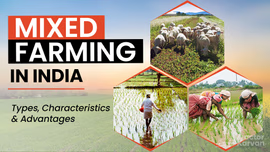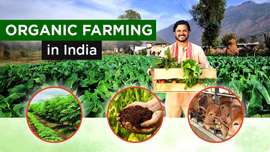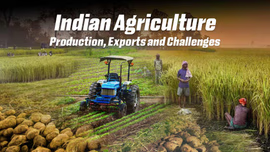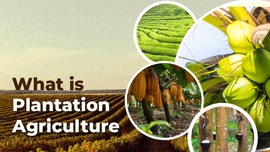What is Red Soil: Composition, Characteristics & Benefits

Red soil is easily characterized by its distinctive red colour, which is imparted by its high iron oxide content. It is also rich in potassium, which supports the healthy growth of a variety of crops. In this blog, we are going to explore the key characteristics of red soil, its formation process, distribution in India, and its significance, particularly in agriculture.
Table of Contents
- Composition & Characteristics of Red Soil
- Where is Red Soil Found in India?
- Which Crops are Suitable for Red Soil?
- What are the Advantages of Red Soil?
- What are the Disadvantages of Red Soil?
Composition & Characteristics of Red Soil
Red soil has been formed by the breakdown of age-old crystalline and metamorphic rocks like gneisses, acid granites, felspathic, and quartzitic rocks. This soil type is likely to be formed in humid, temperate, warm climates.
Red soil can be easily noticed by its unique characteristics, the main being its red to dark red colour. This is particularly because of its rich iron oxide content. Red soil is typically acidic, which is mainly caused by the presence of iron oxides. In terms of chemical composition, red soil is noted to be siliceous and aluminous, which is also rich in potassium. Also, its texture can vary, ranging from sandy clay loam to clay loam.
Due to its good drainage, red soil is highly beneficial for agriculture. However, it lacks organic matter, phosphorus, and nitrogen. This is why it needs a boost through the incorporation of organic matter and fertilizer application.
Where is Red Soil Found in India?
Red soil covers around 10.60% of the total geographical area of India. This type of soil is usually found in undulating lowland plains with a general slope of 3-10%. It is also found in hilly areas that demand the use of a power tiller for cultivation. The following are the central regions of red soil in India:
- Eastern Andhra Pradesh and Madhya Pradesh
- Southeastern Maharashtra
- Eastern Rajasthan
- Uttar Pradesh (Hamirpur, Banda, Jhansi, and Mirzapur)
- West Bengal (Bankura and Birbhum)
- Southern parts of the Thiruvananthapuram district
- Aravallis
Which Crops are Suitable for Red Soil?
Red soil is preferred for its porous and well-drained nature. However, careful crop choice and management are needed due to their low organic matter and nutrients. The following are some crops that grow well in red soil:
Perennial Crops
- Tea: Grows exceptionally well in slightly acidic soils
- Coffee: Prefers well-drained soil
- Rubber: Thrives in deep, well-drained acidic soils
Rabi Crops
- Wheat: Needs suitable iron availability in the soil
- Pulses
- Barley
- Potatoes
Kharif Crops
- Rice: Benefits from the high iron content of the soil
- Groundnut
- Millets
- Maize
Bananas are ideal for red soil as they need potassium for healthy growth. Another important crop is arecanut as it is sensitive to excess moisture and demands loamy, well-drained soil.
What are the Advantages of Red Soil?
- Good Texture: The granular texture of red soil ensures easy root penetration and tillage. The friable nature of red soil makes the work of tractor implements easy and promotes deep rooting.
- Nutrient Content: Red soil is rich in iron oxides and thus is a good source of iron for crops like rice, wheat, maize, and soyabean. It not only promotes root development but also enhances the stress tolerance of these crops. Also, red soil has high potassium content, which is highly important for the healthy growth of crops like bananas.
- Good Drainage: The porous nature of red soil ensures efficient water drainage. This is important for crops that do not grow in waterlogged conditions. Also, it supports healthy root development and prevents several root diseases in crops.
What are the Disadvantages of Red Soil?
- Nutrient deficiency: Generally, red soil is not considered highly fertile because of a lack of several key nutrients and organic content that are important for crop growth.
- Inadequate water retention: Due to its porous nature, red soil does not retain water well. Poor water retention means a higher need for irrigation, which is challenging in regions with water scarcity.
- Additional Resources: To make red soil fit for growing different crops, high amounts of fertilizers and organic matter need to be incorporated. This not only takes time but also demands more effort and money from farmers.
- Erosion: The loose, porous nature makes red soil highly susceptible to erosion by strong winds and rainfall.
Even though red soil is not the most fertile soil, it is still beneficial for agriculture. Red soil regions support cotton, oilseeds, millets, and pulses like chickpeas and lentils. With proper nutrient management and care, it can also grow a wide range of fruits, vegetables, and sugarcane. Powerful, higher HP tractors can allow farmers to overcome tillage issues presented by the high clay content of red soil.


Related Blogs












